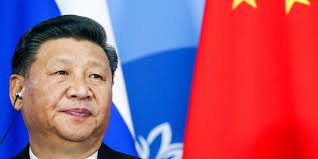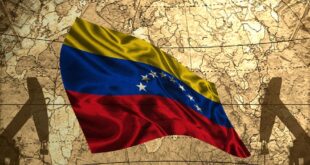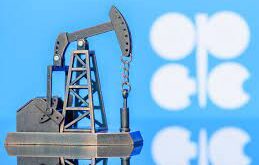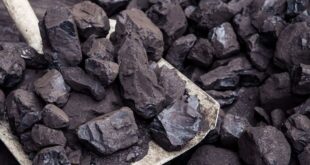The trade conflict between China and the United States has already resulted in the impositions of punitive tariffs on hundreds of billions of dollars’ worth of goods. So long as this situation remains unresolved. China could explore the option of halting its rare earths exports to the U.S.
After the Trump administration “blacklisted“ Huawei in May (thereby prohibiting the company from purchasing American components and software). Chinese President Xi Jinping inspected a magnet manufacturing plant of the JL Mag Rare Earth Co.. located near the city of Jinggangshan in southern Jiangxi province. The footage of Xi’s visit was extensively shown on China’s state-run TV.
The term “rare earths“ collectively refers to a set of 17 chemical elements that make up a part of the 31 types of rare metals. The outstanding physical and chemical properties of rare earths make them an indispensable component in a range of high-tech products. For example. the rare earth elements neodymium and dysprosium are essential to the manufacture of EV batteries. drive motors and missile guidance control systems.
China accounts for 85 percent of the world’s production of rare earths (roughly 105.000 tons a year). The U.S. relies on China for supply of over 90 percent of its rare earth imports. by contrast. 53 percent of Japan’s rare earth imports come from China. China is also honing its high performance battery technology and occupies a crucial position in the global supply chain for rare earth magnets.
To understand the significance of these developments. just imagine if the oil-producing countries in the Middle East not only supplied the world with crude oil. but also maintained a near-monopoly on oil refining and all petroleum products.
In 2010. China halted the export of rare earths to Japan for two months following a territorial dispute over the Senkaku Islands (the Chinese government denies there is a direct connection between the two events). I once spoke with a bureaucrat from the Ministry of Economy. Trade and Industry who was on the front lines of the efforts to deal with this export ban and worked around the clock to develop a counterplan for Japan’s supply of rare earths. He brought his notes on this experience and consulted them as we talked. This is what he told me:
The Chinese government summoned representatives from every rare earth exporter to Beijing and gave them verbal instructions to halt all exports to Japan. These exporters immediately contacted their Japanese trading partners to inform them of the news. The Japanese companies then notified METI’s Nonferrous Metals Division. At every port. ships with rare earth cargo bound for Japan remained at a standstill.
For three to four months after this. Japan appealed to China to resume its rare earth exports but received not a single word in reply from China’s state-owned enterprises.
Meanwhile. the chief of METI’s Manufacturing Industries Bureau issued a document directing an increase in the price of final products made with rare earth materials. such as electronics or automobiles. and requesting the support of companies upstream in the supply chain. Economy Trade and Industry (METI)`>.METI also set the goal of halving Japan’s use of rare metals over the following six months. and focused on the development of alternative materials. In January 2011. Economy Trade and Industry (METI)`>.METI requested a supplementary budget of ¥100 billion to implement this endeavor. By obtaining the agreement of Japanese manufacturers. this laid the groundwork for Japan’s subsequent challenge against China’s export quotas at the World Trade Organization.
Six months later. Japan had succeeded in reducing its use of rare earths (primarily light rare earths). Armed with this achievement. in March 2012. Japan joined the U.S. and the European Union in filing a complaint with the WTO against China’s export quotas on rare earths.
Earlier. in September 2011. an economic cooperation delegation was dispatched to Beijing. where Vice Premier Li Keqiang told Japanese delegates. “We’d like to cooperate: Japanese manufacturers should move their production operations to China.“ In other words. by holding the “upstream“ rare earth elements hostage. China sought to hasten the transfer of Japan’s “downstream“ high-performance magnet technology.
METI learned that Chinese firms were continuing to illegally manufacture rare earth magnets in violation of patents and peripheral patents held by Hitachi Metals. Hitachi Metals filed a trade complaint in the U.S. that resulted in the halt of U.S. use of certain Chinese-manufactured rare earth magnets.
In August 2012. Economy Trade and Industry (METI)`>.METI revised the list of technologies and manufacturing equipment prohibited for export to countries excluded from the Foreign Exchange and Foreign Trade Act (the non-“whitelisted countries“ — in other words. countries without recognized export compliance oversight). This move was supported by the U.S. Department of Defense. TDK. a leading manufacturer of high-performance magnets. had been planning to start producing in China but was prevented from doing so by this amendment to the Foreign Exchange and Foreign Trade Act.
In March 2014. a WTO dispute settlement panel ruled against China. and China abolished its rare earth export quotas in 2015.
Japan has also invested in Lynas Corp.. an Australian rare earths mining company. thereby securing an alternative source of the raw materials. This series of events precipitated a steep drop in rare earth prices. which had previously soared (at one point increasing by tenfold in a single year). thereby averting a crisis. Lynas is currently the source of one-third of Japan’s rare earth magnet imports.
We should have realized much earlier that China could weaponize its rare earth exports. When Deng Xiaoping visited the Inner Mongolian rare earth production area of Baotou in 1987. he made a shrewd prediction: “The Middle East has its oil. China has rare earths.“
Today. China overwhelmingly dominates the market for “downstream“ magnets. rather than the “upstream“ rare earth mineral components. In 2018. the U.S. imported $250 million worth of rare earth magnets from China. The U.S. administration of President Donald Trump has no choice but to exclude these rare earth imports from its retaliatory tariffs aimed at China.
In 1927. the mountains of Jinggangshan provided Mao Zedong with a base from which to continue his rural revolt. This meant that after the founding of the People’s Republic of China. the area acquired an almost sacred significance for its connection to the revolution. Xi’s recent visit to Jinggangshan was staged to demonstrate China’s resolve to embark on yet another “Long March.“ and fight this trade war like other wars of attrition — to the bitter end.
 Iran Energy News Oil, Gas, Petrochemical and Energy Field Specialized Channel
Iran Energy News Oil, Gas, Petrochemical and Energy Field Specialized Channel




